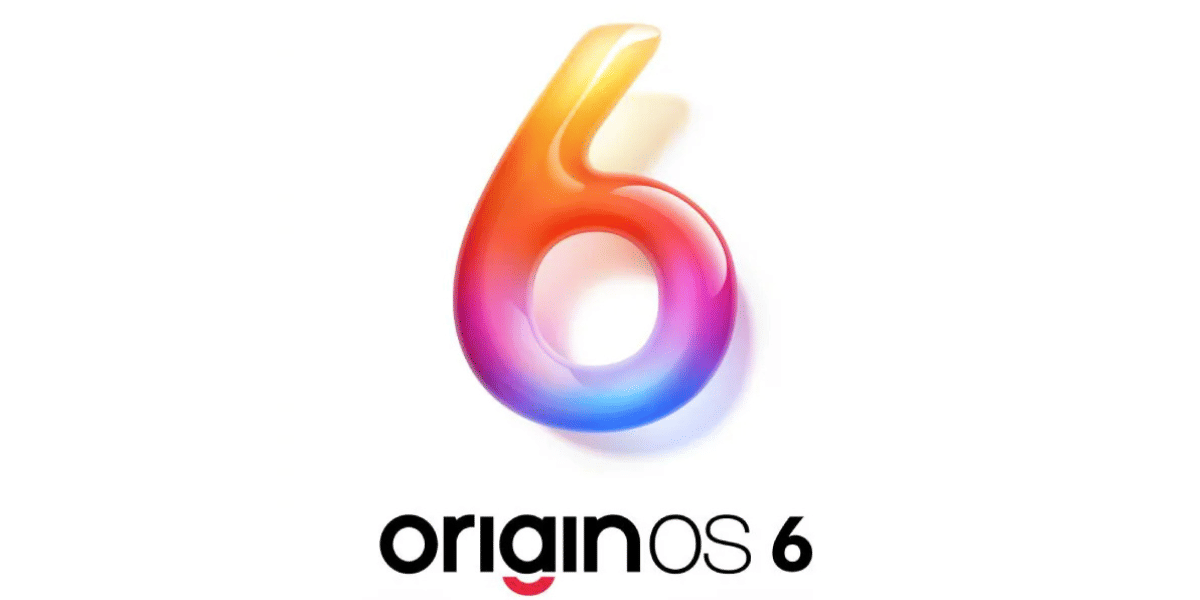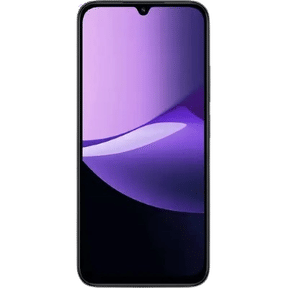The OxygenOS 15 Vs. HyperOS 2.0 brings forth some interesting comparisons that most people are curious to know. These two Operating systems came around the same time in the last week of October 2024. Both introduced new ways to create more personalized and desirable user experiences, making them clear competitors in the market.
Today, we will break down their key differences, highlighting what makes each OS unique and helping you determine which one best aligns with your style. So, let’s begin!
Also Read: OxygenOS 15 Features, Release Date, And Supported Devices!
OxygenOS 15 Vs. HyperOS 2.0: An Overview
Take a look at the overview of the things that we will explore in detail later in this article:
| Feature | OxygenOS 15 | HyperOS 2.0 |
|---|---|---|
| UI Design | Clean, minimalistic, focused on simplicity and ease of navigation | Integrated with OnePlus ecosystem for a seamless cross-device experience |
| Performance Optimization | Smooth and stable, focused on fast processing and minimal lag | Fast and fluid, optimised for gaming and multitasking through advanced resource management |
| AI Integration | Automatic enhancements for app loading, battery life, and photography | Interactive AI with voice commands, AI-powered animations, and real-time battery insights |
| Battery Management | Adaptive Battery feature that learns app usage for better power efficiency | High-Performance Mode for speed, dynamic app control for power-saving |
| Privacy & Security | App Locker, Private Safe, and enhanced permission controls | Screen masking, secure folders, end-to-end encryption, and customizable notification privacy |
| Ecosystem Integration | Basic themes and colour accents, limited customisation | Supports extensive Xiaomi ecosystem for IoT and accessory connectivity |
| Customisation Options | Basic themes and color accents, limited customisation | Advanced customisation options with a wide range of themes, icons, and interactive animations |
Also Read: HyperOS 2.0 Eligible Devices, Release Date All Details List!
User Interface (UI) and Design Philosophy
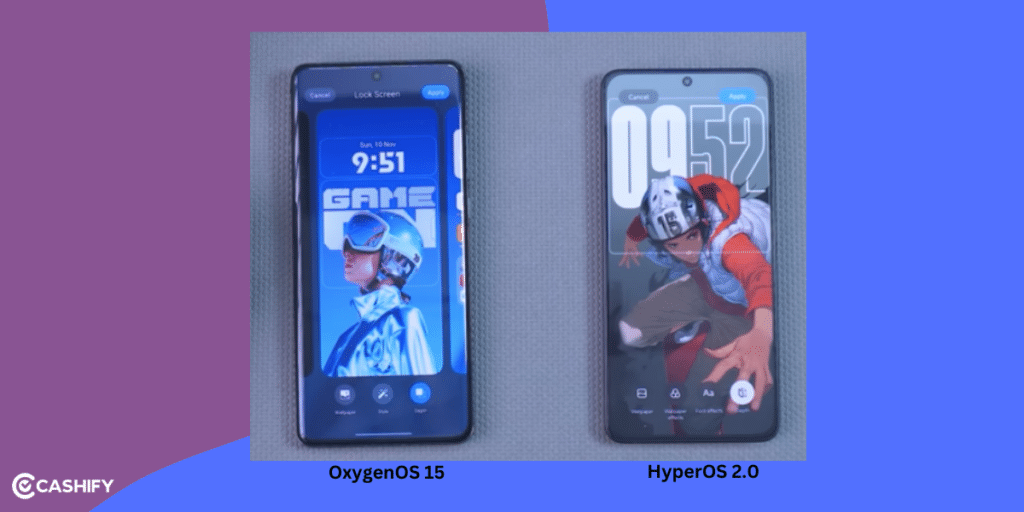
OxygenOS 15: OxygenOS has always been appreciated for its clean, minimalistic design that serves users seeking simplicity in functionality. OxygenOS 15 continues in this lineage while presenting an interface that is intuitive, smooth, and free of clutter. The layout makes the interface seem spacious, with clear fonts, well-defined app icons, and easy navigation. Although, the options for customisation are a bit discreet.
For example, to change the lock screen wallpaper, one has to go to settings and then personalisation to manage it. However, this feature is more accessible in HyperOS 2.0 happening with just a tap.
Nevertheless, it still allows users to take the reins in themes, colour accents, and widgets.
HyperOS 2.0: In OxygenOS 15 Vs. HyperOS 2.0, the Xiaomi HyperOS 2.0 goes for a vibrant, bold design and strives for functionality with an energetic user experience. With eye-catching animations, a wide range of customisable themes, and highly interactive icons, HyperOS 2.0 is visually compelling.
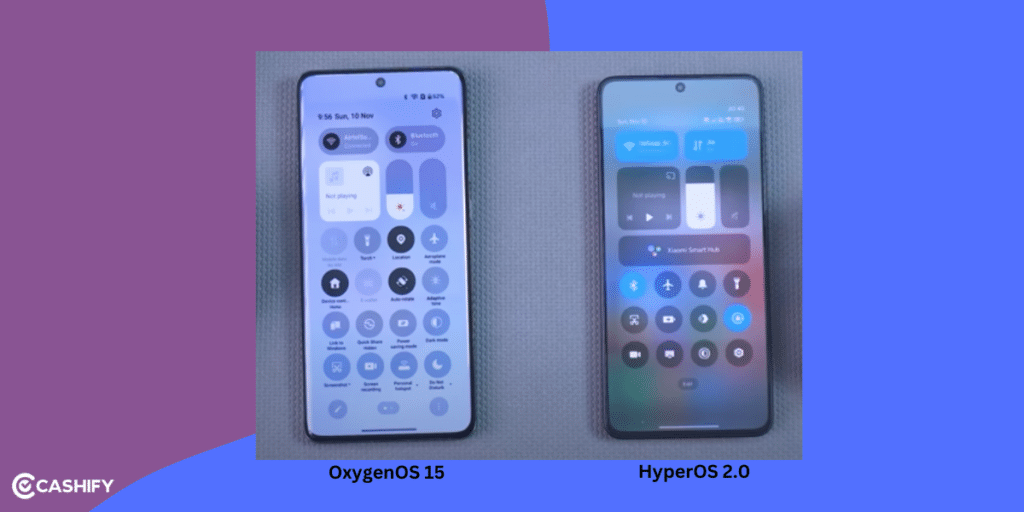
Also read: What Is OnePlus AI Eraser? Know All Details, Eligible Devices And More!
Performance Optimization and Speed
OxygenOS 15: The OxygenOS 15 focuses more on performance and speed. It is designed to provide fast processing with fewer lags through the reduction of background tasks and proper management of apps. By trying to offer an incredibly smooth feel, OnePlus has aimed for applications that open fast, multitasking is relatively easy, and games run perfectly without a problem.
HyperOS 2.0: Above all, Xiaomi’s HyperOS 2.0 focuses on speed also by issuing new algorithmic developments by Xiaomi. Hence, this is well suited for users who spend a significant amount of time on mobile games and multitaskers. It smartly distributes resources to handle heavy usage without slowness problems.
OxygenOS 15 Vs. HyperOS 2.0: AI Integration
OxygenOS 15: OnePlus has smart AI features designed to suit a user’s usage pattern. It learns usage patterns, preloads frequently used applications, optimises battery life, and adjusts system settings according to usage habits. On top of that, one has photography enhanced by AI, which automatically adjusts the requirements for a much better image, as some people actually care more about convenience instead of manual adjustments.
HyperOS 2.0: The AI integration was highly advanced in HyperOS 2.0, providing AI-enhanced animations and resource management. In return, the OS provides real-time insights regarding battery consumption, application behaviour, and performance to help users take charge. In gaming, HyperOS 2.0’s AI can sense lag and adjust settings dynamically for improved gameplay. HyperOS 2.0’s AI assistant also responds to voice commands, unlocking hands-free control and tasks.
Also Read: Most Annoying Problems With Xiaomi Smartphones And How To Fix Them
Battery Management
OxygenOS 15: OxygenOS 15 is known for saving battery life well by managing apps smartly and reducing background activity. The ‘Adaptive Battery’ feature learns which apps you use the most and reduces power to less-used apps, helping the battery last longer.
HyperOS 2.0: HyperOS 2.0 also includes strong battery-saving options and better energy control. It can spot apps that use too much power and close them automatically. HyperOS 2.0 also has a ‘High-Performance Mode’ for users who want more speed, even if it uses more battery.
Who Excels In Privacy and Security Features?
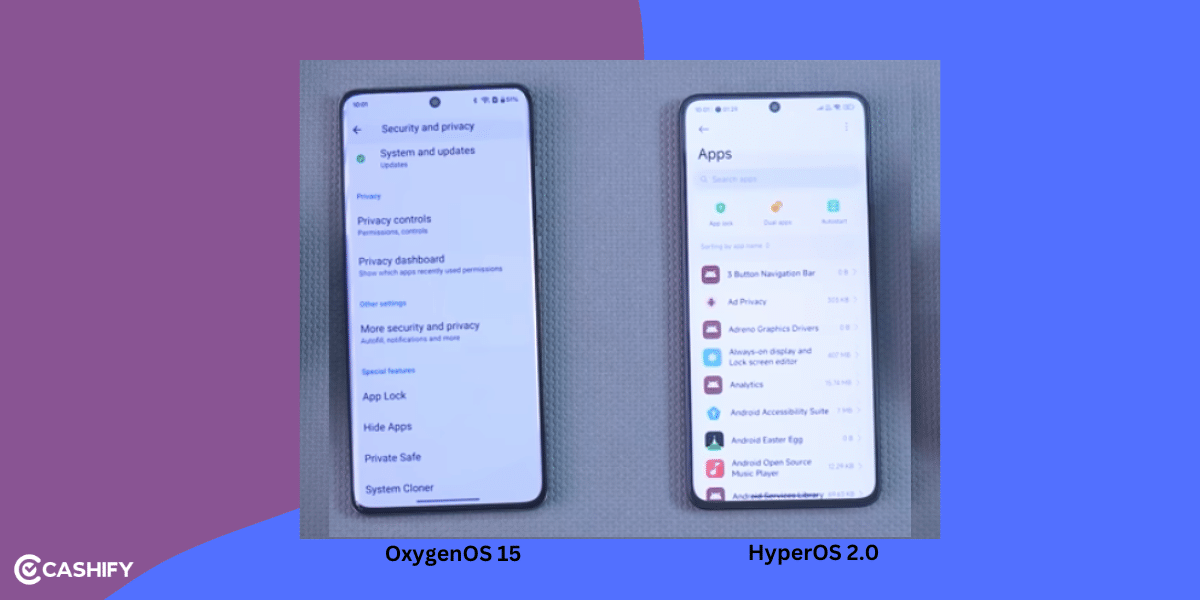
OxygenOS 15: Privacy remains a priority in OxygenOS 15. Features like App Locker, which allows users to lock specific apps, are present. But haven’t we seen such Android features already? There is also Private Safe, which hides sensitive files. Enhanced permission controls ensure that apps only have access to data the user permits.
HyperOS 2.0: On the other hand, HyperOS 2.0 includes advanced privacy tools like screen masking, secure folders, and end-to-end encrypted communications. It also introduces a unique feature where notifications can be masked for added privacy, giving users full control over how and when personal information is displayed.
Ecosystem Integration
OxygenOS 15: OxygenOS 15 is built to work smoothly with OnePlus devices, giving users a well-integrated OnePlus experience. It allows for easy syncing between OnePlus devices, making data sharing and cross-device features simple for users loyal to the OnePlus brand.
HyperOS 2.0: Between OxygenOS 15 Vs. HyperOS 2.0, the HyperOS 2.0 allows wider connectivity. It fits well with Xiaomi’s larger ecosystem, so ideally, users can have it in multiple Xiaomi products. It supports multi-device controls, allowing easy connections with Xiaomi’s IoT products and accessories.
If you’re committed to OnePlus, OxygenOS 15 will give you a more seamless experience, while HyperOS 2.0 suits users who want extensive connectivity within the Xiaomi ecosystem.
Also Read: Xiaomi HyperOS Vs MIUI 14: Which Is A Better OS For You?
Final Verdict: OxygenOS 15 Vs. HyperOS 2.0
Picking from OxygenOS 15 Vs. HyperOS 2.0 depends on what you like the best. OxygenOS 15 is simple, clean, and works well if you want speed, steady battery, and smooth use, especially with OnePlus devices. HyperOS 2.0 is great if you enjoy a more visually appealing, customisable setup with AI features. It is good for gaming and multitasking, and it connects well with Xiaomi products. Both are great in their own spectrum, but OxygenOS 15 is for those who like a simpler experience, while HyperOS 2.0 suits people who want more control and features.
Which one of the OS do you prefer more? Drop your choice in the comments below!
If you’ve just bought a new phone and don’t know what to do with your old phone, then here’s your answer. Sell old mobile to Cashify and get the best price for it. If you are planning to buy a new phone, check out Cashify’s refurbished mobile phones. You can get your favourite phone at almost half price with six-month warranty, 15 days refund and free delivery.





























